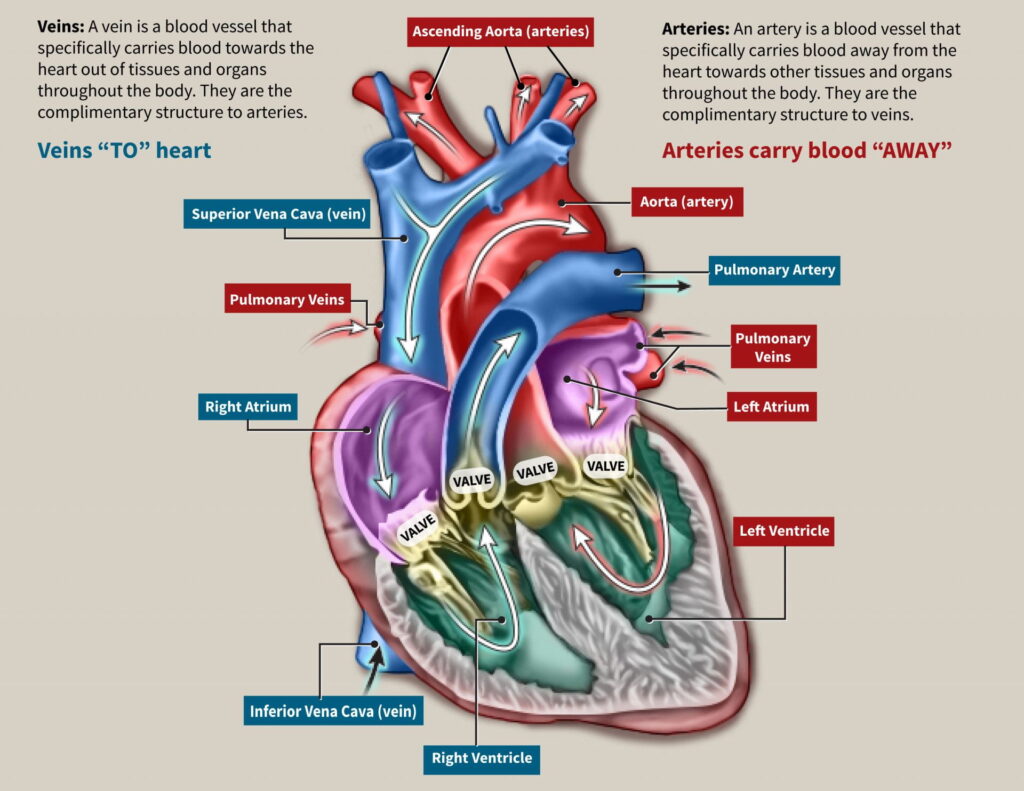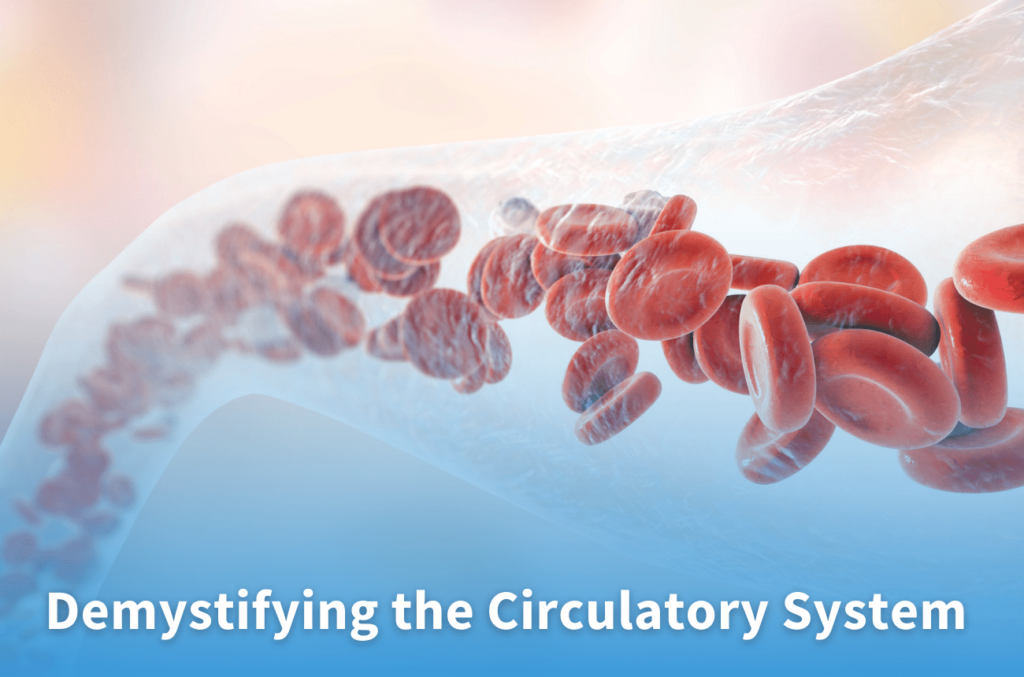The circulatory system carries blood and other circulating fluids throughout the body. The main parts of the circulatory system include arteries, veins and organs that help pump the blood and lymph.
The parts of the circulatory system that specifically pump blood are also called the cardiovascular system.
Knowing the difference between parts of these important systems can help you understand some of the conditions that can affect the heart and blood vessels.
Systems
Circulatory system: The system or organs and tissues, including the heart and blood vessels, that circulates blood and lymph through the body. Lymph, the lymphatic vessels and glands are also part of the circulatory system.
Cardiovascular or vascular system: The parts of the circulatory system that circulate blood through the heart and blood vessels.
There is a range of conditions that affect the circulatory/cardiovascular system, often referred to as cardiovascular disease. These include high blood pressure, congestive heart failure, arrythmia and the presence of blood clots.
Vascular Structures
Vessels: A vessel is a tube or canal within the body that contains and transports fluid through the circulatory system. This can be an artery, vein, or lymphatic vessel, and they may contain blood or lymph fluids, depending on their role in the body.
Arteries: An artery is a blood vessel that specifically carries blood away from the heart towards other tissues and organs throughout the body. They are the complimentary structure to veins.
Veins: A vein is a blood vessel that specifically carries blood towards the heart out of tissues and organs throughout the body. They are the complimentary structure to arteries.
Capillaries: These are the tiny blood vessels at the ends of the cardiovascular branches. They have thin walls that allow oxygen and nutrients from the blood to travel through and reach organs and tissues. The capillaries also transport waste products that are extracted from these tissues.
A condition is classified as a vascular disease if it affects the network of your blood vessels. Diseases within vascular structures lead to issues with circulation of fluid to different parts of the body. Some examples include atherosclerosis, blood clots and peripheral venous disease.
The Heart
Valves: A heart valve is a membranous structure in the heart that folds over or closes to prevent the return flow of any blood that passes through it. Valves are also in veins to stop blood from flowing the wrong direction, but they are not present in arteries. Arteries do not need valves, because the pressure from the heart strong enough that blood is only able to flow in one direction.
Atrium: An atrium is a chamber of the heart that receives blood from the veins and forces it into a ventricle before it is transported out of the heart. There are two atria, the left and the right, and they are located at the top of the heart, above the ventricles. Atria are the complimentary chambers of ventricles.
Ventricle: An ventricle is a chamber of the heart that pumps blood from the heart to the body. There are two ventricles, the left and the right, and they are located at the bottom of the heart, below the atria. Ventricles are the complimentary chambers of atriums.
Vena cava: The vena cava is the large vein that carries blood towards the heart from other tissues and organs of the body. Other, smaller veins from throughout the body feed into the vena cava. The vena cava is attached to the right atrium of the heart
Aorta: The aorta is a large artery that carries blood away from the heart towards tissues and organs of the body. Other, smaller arteries branch off from the atrium to feed into the body. The aorta arises from the left ventricle of the heart.
Heart diseases are variable in their type and symptoms, based on what part of the heart they affect. Coronary artery disease impacts the major vessels of the heart. Cardiac arrest happens when heart function stops. Arrhythmia occurs when the muscle contractions of the heart are not properly regulated. Congenital heart diseases are the result of genetic malfunctions in the heart’s development.

Cardiovascular Disease Treatment at Washington University
There are many different structures and diseases associated with the cardiovascular or circulatory system, so it is easy to be confused. Washington University cardiologists, cardiothoracic surgeons, and vascular surgeons offer guidance to patients with cardiovascular conditions through the process of diagnosis and treatment. To learn more about the services provided by the cardiovascular team, visit their website. Appointments can be scheduled with cardiovascular surgeons through the division contact at 314-362-7260.
